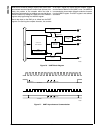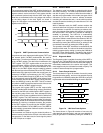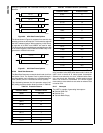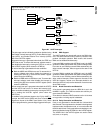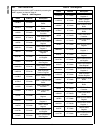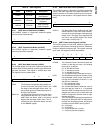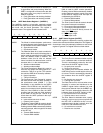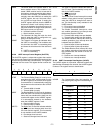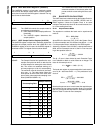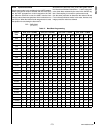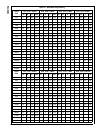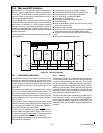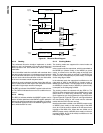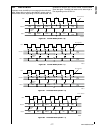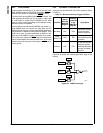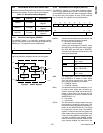
www.national.com 172
CP3BT26
22.3.10 UART Mode Select Register 2 (UnMDSL2)
The UnMDSL2 register is a byte-wide, read/write register
that controls the sample mode used to recover asynchro-
nous data. At reset, the UnOVR register is cleared. The reg-
ister format is shown below.
USMD The USMD bit controls the sample mode for
asynchronous transmission.
0 – UART determines the sample position au-
tomatically.
1 – The UnSPOS register determines the
sample position.
22.3.11 UART Sample Position Register (UnSPOS)
The UnSPOS register is a byte-wide, read/write register that
specifies the sample position when the USMD bit in the
UnMDSL2 register is set. At reset, the UnSPOS register is
initialized to 06h. The register format is shown below.
USAMP The Sample Position field specifies the over-
sample clock period at which to take the first
of three samples for sensing the value of data
bits. The clocks are numbered starting at 0
and may range up to 15 for 16× oversampling.
The maximum value for this field is (oversam-
pling rate - 3). The table below shows the
clock period at which each of the three sam-
ples is taken, when automatic sampling is en-
abled (UnMDSL2.USMD = 0).
The USAMP field may be used to override the
automatic selection, to choose any other clock
period at which to start taking the three sam-
ples.
22.4 BAUD RATE CALCULATIONS
The UART baud rate is determined by the System Clock fre-
quency and the values in the UnOVR, UnPSR, and Un-
BAUD registers. Unless the System Clock is an exact
multiple of the baud rate, there will be a small amount of er-
ror in the resulting baud rate.
22.4.1 Asynchronous Mode
The equation to calculate the baud rate in asynchronous
mode is:
where BR is the baud rate, SYS_CLK is the System Clock,
O is the oversample rate, N is the baud rate divisor + 1, and
P is the prescaler divisor selected by the UPSR register.
Assuming a System Clock of 5 MHz, a desired baud rate of
9600, and an oversample rate of 16, the N × P term accord-
ing to the equation above is:
The N × P term is then divided by each Prescaler Factor
from Table 69 to obtain a value closest to an integer. The
factor for this example is 6.5.
The baud rate register is programmed with a baud rate divi-
sor of 4 (N = baud rate divisor + 1). This produces a baud
clock of:
Note that the percent error is much lower than would be pos-
sible without the non-integer prescaler factor. Error greater
than 3% is marginal and may result in unreliable operation.
Refer to Table 71 below for more examples.
7 1 0
Reserved USMD
7 4 3 0
Reserved USAMP
Oversampling Rate
Sample Position
123
7 234
8 234
9 345
10 345
11 456
12 456
13 567
14 567
15 678
16 678
BR
SYS_CLK
O NP××()
------------------------------=
NP×
5
6
×10()
16 9600×()
------------------------------- 32.552==
N
32.552
6.5
------------------ 5.008 (N = 5)==
BR
5
6
×10()
16 5 6.5××()
----------------------------------- 9615.385==
%error
9615.385 9600–()
9600
------------------------------------------------- 0.16==



